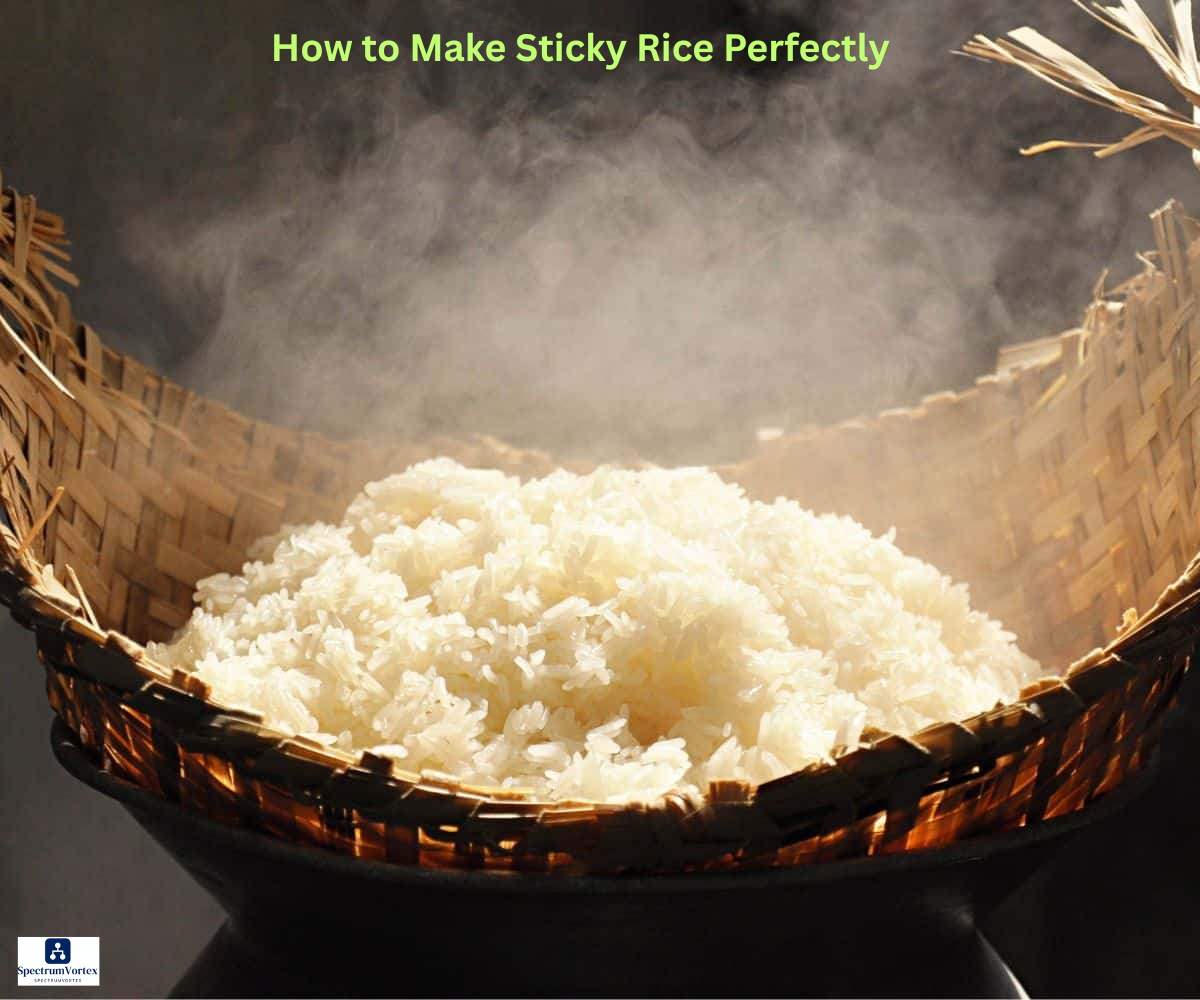Have you ever tried making sticky rice at home and ended up with a pot of disappointment? Maybe it was too mushy, dry, or didn’t have the perfect chewy bite you get at Thai or Lao restaurants. Yeah, I’ve been there too. But don’t worry—I cracked the code and will walk you through it, just like I’m showing a friend—no fluff, no chef speak, just a simple guide that works.
Let’s fix this together. Sounds good? Cool. Let’s dive in.
What Sticky Rice Is (And What It’s Not)
Sticky rice, also known as glutinous or sweet rice, is extremely popular in Southeast Asia. But it has nothing to do with gluten or dessert (despite the name). It’s sticky because of the type of starch it contains—amylopectin if you want to get nerdy about it.
What makes it different from other rice? When cooked right, it clumps together into soft, chewy balls, making it easy to pinch with your fingers. It is usually served with grilled meats, spicy salads, mango, and coconut milk.
Pro tip: Don’t confuse it with sushi rice or jasmine rice. Those are different.
Step 1: Choose the Right Rice
This is where most people mess up. It won’t turn out right if the rice isn’t the correct type.
Look for long-grain glutinous rice. In the U.S., you can usually find it in Asian grocery stores or online. Brands like Three Ladies or Elephant are solid choices. Ensure the bag says “glutinous rice” or “sweet rice.”
Avoid regular white rice, jasmine rice, or sushi rice. They won’t give you that classic sticky rice feel.
Step 2: Rinse the Rice
Grab a big bowl, pour in your rice, and rinse it with cold water. Swirl it around with your hand, drain, and repeat. Do this 3–4 times until the water runs clear.
This step matters. It washes away extra starch so the rice doesn’t become a gooey mess.
Step 3: Soak It (Don’t Skip This!)
Sticky rice needs to be soaked for a long time to cook evenly. I soak mine for at least 4 to 6 hours. If you can, do it overnight.
Are you in a rush? Soak in warm water for 2 hours. It’s not ideal, but it’ll do the trick in a pinch.
Soaking softens the grains and makes them steam-ready. Without it, the rice will stay hard in the middle. Nobody wants that.
Step 4: Steam, Don’t Boil
Here’s where things get real. Sticky rice isn’t boiled like regular rice. It’s steamed.
If you have a bamboo steamer and a pot, awesome. If not, a mesh strainer over a boiling pot of water also works. Just make sure the rice doesn’t come into contact with the water. Line your steamer with cheesecloth or a clean towel to keep the grains from falling through.
Steam for 25–30 minutes. Flip the rice halfway through to cook it evenly.
Real-life example: I dumped sticky rice in my rice cooker with water. It came out way too wet. Once I tried steaming, it was a total game-changer.
Step 5: Let It Rest
After steaming, cover the rice and let it sit for 5-10 minutes. This helps the texture settle.
It might seem small, but this resting step gives you that nice balance of stickiness and chewiness. Trust me, it’s worth the wait.
Common Mistakes (I’ve Made Them All)
Here are some easy-to-avoid goofs that can ruin your rice:
- Using the wrong kind of rice.
- Skipping the soak.
- Boiling instead of steaming.
- Not flipping the rice while steaming.
- Leaving it uncovered after cooking.
Avoid these, and you’re golden.
Real Talk: Why This Method Works
I didn’t invent this method. I learned it from a friend whose family is from Laos. They grew up making sticky rice daily. When I asked how they always got it perfect, they broke it down for me just like this.
And they were right. According to a 2022 article from Serious Eats, steaming instead of boiling preserves the grain structure and delivers the classic sticky texture every time.
Even America’s Test Kitchen tested this method and said the same thing: soak, steam, rest. That’s the magic trio.
Bonus Tips for Next-Level Sticky Rice
Want to impress your guests or treat yourself? Try these:
- Add pandan leaves or lemongrass to the steaming water for a fragrant twist.
- Serve in a bamboo basket to keep it warm and give it an authentic feel.
- Reheat leftovers by steaming again. Microwaving makes it dry.
And if you’re making mango sticky rice, don’t forget the sweet coconut sauce. That’s the cherry on top.
Sticky Rice FAQs
Is sticky rice gluten-free?
Yep! Even though it’s called glutinous rice, it has zero gluten. It’s safe for gluten-sensitive folks.
Can I cook sticky rice in a rice cooker?
Only if it has a special “sticky rice” or “steam” setting, most rice cookers aren’t built for this.
How long does it last?
Fresh is best, but it stays suitable for a day or two if wrapped tightly. Just steam it again to bring it back to life.
Wrap-Up: You Got This
Making sticky rice the right way might seem like a process, but once you get the hang of it, it becomes second nature. No more guessing. No more soggy or crunchy disasters.
This step-by-step method works. It’s how families in Thailand and Laos have done it for generations. And now you can, too.
Call to Action:
Try it out, and let me know how it goes! If you have tips or want help troubleshooting, comment or message me. Sticky rice might just become your new favourite side dish.
And hey, if you found this guide helpful, share it with someone else who’s been struggling with their rice game. Let’s all eat better together.
